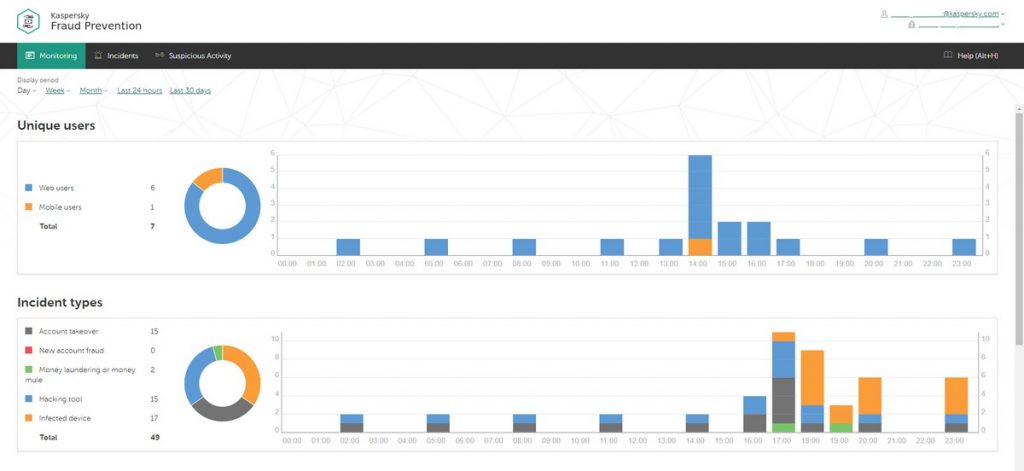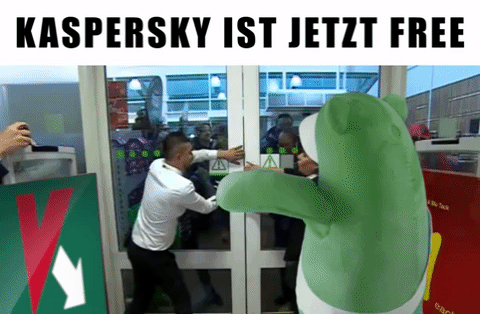August 13, 2018
iDeath of eVoldemort
Fairy tales and fantasy stories have long dispelled the myth about the invincibility of global storybook power brokers and villains (as for us, for more than 20 years we’ve been busting the very same myth in cyberspace). Every Voldemort relies on security of his diary, his ring, his snake, his… well, I guess you know all about the Horcruxes. And the success of your war on villainy, whether fairytale or virtual, depends on two key qualities: perseverance and intellect (meaning technology). Today I will tell you how perseverance and intellect, plus neural networks, machine learning, cloud security and expert knowledge — all built into our products — will keep you protected against potential future cyberthreats.
In fact, we have covered the technologies for protection against future cyberthreats before (more than once, a lot more than once, and even for laughs). Why are we so obsessed with them, you may wonder.
It’s because these technologies are exactly what makes robust protection different from fake artificial intelligence and products that use stolen information to detect malware. Identifying the code sequence using a known signature after the malware has already sneaked into the system and played its dirty tricks on the user? No one needs that. “A poultice on a wooden leg,” so to say.
But anticipating cybervillains’ patterns of thought, apprehending the vulnerabilities they’ll find attractive, and spreading invisible nets capable of automatic, on-the-spot detection — only a few industry players are capable of that, sad but true. In fact, very few, according to independent tests. WannaCry, the decade’s largest epidemic, is a case in point: Thanks to System Watcher technology, our products have proactively protected our users against this cyberattack.
The key point is: One cannot have too much future cyberthreat protection. There is no emulator or big-data expert analysis system able to cover all of the likely threat vectors. Invisible nets should cover every level and channel as much as they can, keeping track of all objects’ activities on the system, to make sure they have no chance ever to cause trouble, while maintaining minimum use of resources, zero “false positives,” and one hundred percent compatibility with other applications to avoid blue screens of death.
The malware industry keeps developing, too. Cybervillains have taught (and continue to teach) their creations to effectively conceal themselves in the system: to change their structure and behavior, to turn to “unhurried” action modes (minimize the use of computing resources, wake up on schedule, lie low right after penetrating the target computer, etc.), to dive deep into the system, to cover up their traces, to use “clean” or “near-clean” methods. But where there is a Voldemort, there are also Horcruxes one can destroy to end his malicious being. The question is how to find them.
A few years ago, our products beefed up their arsenal of proactive technologies for protection against advanced cyberthreats by adopting an interesting invention (patent RU2654151). It employs a trainable objects behavior model for high-accuracy identification of suspicious anomalies in the system, source localization and suppression even of the most “prudent” of worms.






![YOU CAN NEVER GET TOO MANY AWARDS. SEE 1ST COMMENT FOR ENGLISH ⏩
"А из нашего окна страна Австрия видна!" - практически (с). Но в этих австриях я был не смотреть из окна, а по многочисленным деловым делам, первое из которых - лично получить несколько важных наград и множество сертификатов от независимой тестовой лаборатории AV-Comparatives.
Это далеко не первая наша награда. Скажу больше - на протяжении последних десяти лет по результатам независимых тестов к нам даже близко ни один конкурент не подобрался. Но почему тогда такое внимание конкретно к этой победе? Ответ простой: густопопсовый геополитизм. В наше весьма геополитически [очень мягко говоря] непростое время... Ну, если отбросить все казённые слова, то будет, как в известном анекдоте про поручика Ржевского. В той самой истории, когда ему указали повторить свою фразу без матерщины. На что тот ответил: "Ну, в таком случае я просто молчал".
Так вот, в наше "поручико-ржевско-молчаливое время" участвовать и получить первые места в европейских тестах - это за пределами научной и ненаучной фантастики. Что в целом совпадает с одной из основных парадигм моей жизни: "Мы делаем невозможное. Возможное сделают и без нас" (с). Большими трудами и непомерными усилиями - да! Это можно! Мы заделали такие продукты, такие технологии, такую компанию - что даже в непростое время нас и в Европах знают, уважают, любят и пользуются. Ура!](https://scontent-iad3-2.cdninstagram.com/v/t51.29350-15/430076034_1096357205018744_692310533755868388_n.heic?stp=dst-jpg&_nc_cat=103&ccb=1-7&_nc_sid=18de74&_nc_ohc=XLII-tX29aoAX80SM4u&_nc_ht=scontent-iad3-2.cdninstagram.com&edm=ANo9K5cEAAAA&oh=00_AfBINCtkZ3-r_aTvdSC36JELI05V6PuBnMWs672PK3GsBQ&oe=65E63D48)














